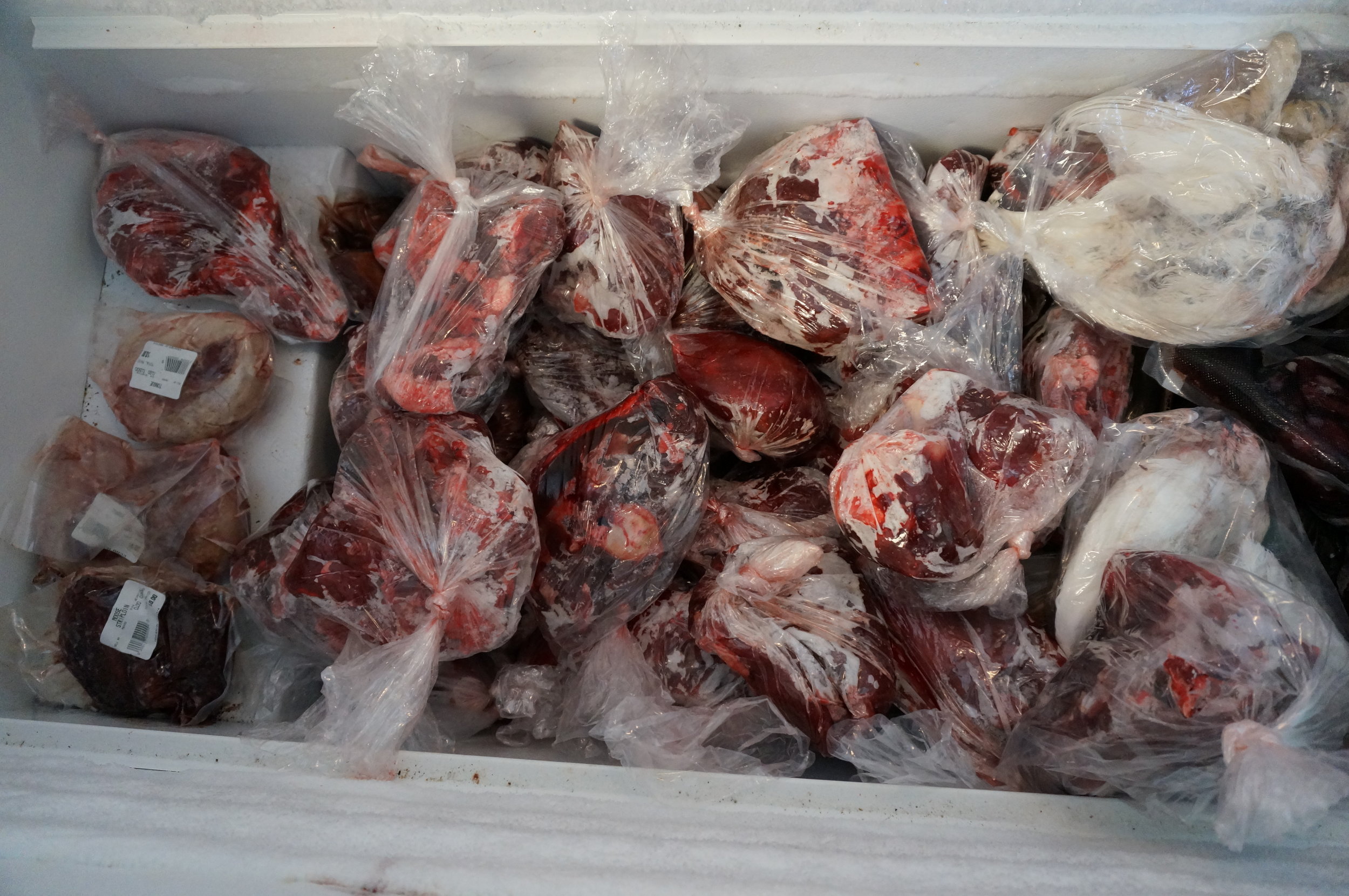Expansion of the Community Freezer Program in Hopedale
Issues Affecting Access To Wild Food In Hopedale
Wild food harvested from the land and sea — like salmon, arctic char, geese, duck, berries, and caribou — is the preferred food of many residents in Hopedale. Caribou is considered a particularly important resource in Hopedale, but a decline in the George River Caribou herd, and a subsequent hunting ban on caribou, is affecting hunters' access to wild food.
The high costs of hunting equipment and gear —from snowmobiles and the gas to power them, to costly guns and ammo — is also limiting residents' ability to hunt, fish, and forage wild food in Hopedale.
Concurrent to these issues, many residents of Hopedale work full time jobs and have less time than they traditionally had to hunt, fish, and forage, or, as mentioned, they simply can no longer afford to. As a result, traditional food skills and knowledge are being lost and not handed down a generation.
Climate change is also changing access to food in Northern communities. Changes in sea ice behaviour, including earlier spring break up, as well as stronger and more frequent stormy conditions, affect a hunter’s ability to get around by boat and foot. Climate change is also altering the predictability of animal migratory behaviour in traditionally hunted game.
The Community Freezer Program In Hopedale
A Community Freezer stores wild, hunted fare so it can be donated to residents who struggle to access these goods themselves.
The Hopedale Inuit Community Government already had a Community Freezer Program in Hopedale, and the program funded local hunters to hunt caribou for it. Hunters could also donate excess game to the Freezer.
The Freezer Program was providing game for low-income families in Hopedale, and elders who had no family to hunt for them. These residents could collect one piece of frozen meat per month, while supplies lasted after hunting season.
Through community consultations, it became clear that the program’s 2 small freezers often ran out of food, and it largely only provided caribou, and only to certain members of the community. This limited the program’s ability to meet community needs.
Residents wanted the program expanded, so that more traditional foods could be available through the freezer, and, so more people could access this program.
A new dehydrator was among the added amenities.
Enhancement Of The Community Freezer Program In Hopedale
To increase the amount and variety of wild food available to the community, this project increased the size and capacity of the Freezer program in several ways.
A larger walk-in freezer was added to the building, to increase the program’s storage capacity, and the variety of the freezer’s offerings was increased to include stores of seal, moose, arctic char, rock cods, and other country foods.
Eligibility guidelines were changed, and a delivery system was launched, so more people could avail of the program. As well, changes were made so that elders, and those most in need, could access the freezer once a week, instead of once a month.
The project also provided new equipment, like a meat saw, grinder, and vacuum sealers, to better prepare donations to the freezer. The equipment is also available for use by community members to prepare their own harvest, and in exchange for using these tools, they donate a little of what they’re butchering to the Freezer.
Lastly, this project established a pantry of staple items to complement wild foods, like flour and sugar, so that families could prepare whole meals.
Impact of the Community Freezer program in Hopedale
A 2017-2018 Evaluation of the Community Freezer program in Hopedale revealed the program continues to be an asset in combating issues of food security in the community, and, preserving the culture of consuming wild, country food.
The number of people who use the community freezer program nearly doubled in the first two years (47 to 88), and statistics from 2014-2018 reveal it's a particularly important resource in January and February.
Funds to purchase the freezer came from Trent University, while funds to implement the NiKigijavut Hopedalimi Action Plan itself came from the Public Health Agency of Canada. The Hopedale Inuit Community Government maintains the freezer. The Canadian Rangers in Hopedale installed the new freezer, and the Department of Health and Social Development of Nunatsiavut Government are supporting hunting activities when they can.







